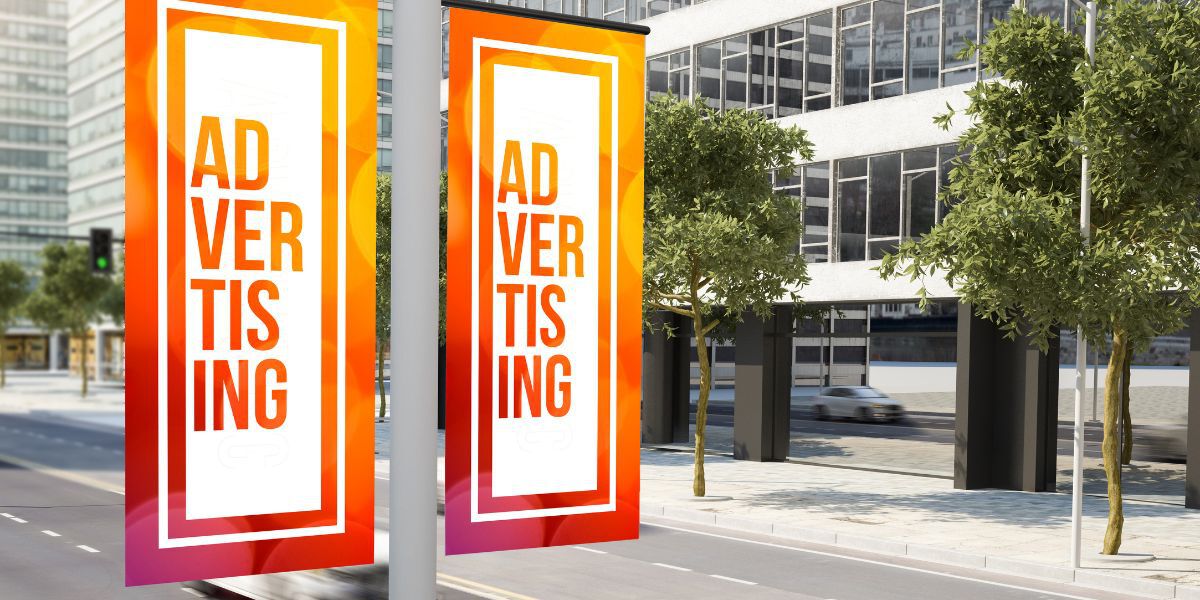Campaign Banner Design Templates
Create a professional-looking vinyl banner with our free design templates. Choose a template, customize it with your message and logo, and you're ready.
Use Our Political Banner Design Templates in 3 Easy Steps
Step 1:
Browse through our wide selection of political campaign banner design templates and select the one that you like.
Step 2:
Use our design tool to change background color, select fonts, add texts and shapes, and add your own photo or use our stock image library.
Step 3:
Preview and save your vinyl banner design, then click “Proceed to Order.” That's it!
Browse through our wide selection of political campaign banner design templates and select the one that you like.
Step 2:
Use our design tool to change background color, select fonts, add texts and shapes, and add your own photo or use our stock image library.
Step 3:
Preview and save your vinyl banner design, then click “Proceed to Order.” That's it!
Frequently Asked Questions about Political Campaign Banners
What is the allowed size of campaign materials?
The allowed sizes of campaign materials often vary depending on the region and the specific electoral regulations governing that area. There are usually definite size restrictions on the promotional materials for election banners to promote fairness in campaigning. You can print and install different-sized banners, from 4' x 6' to 3' x 8', all the way to 8' x 20', but it’s important to remember that you cannot put a much larger banner opposite or beside your candidate’s opponent.There are also size restrictions based on the location size and public safety. Your banners cannot restrict or block movement, and they should be placed in approved areas where they cannot bother people's daily living.
What are the guidelines for font size and readability on campaign materials?
The Federal Election Commission (FEC) in the United States has established several guidelines for font size and readability on campaign materials. These guidelines aim to ensure that the information is accessible and easily readable by the public. These guidelines often focus on font sizes, font types, contrast, and banner layout.- For font sizes, the headers and primary texts should at least be seen and readable at farther distances, while the body texts and fine prints must be visible when read relatively near.
- For font types, these must be legible and easy to understand. Sans serif fonts like Arial, Helvetica, and Cambria are appropriate. Also, avoid using intricate and overly decorative fonts.
- Choose the proper color contrast for your message and banner background. The most straightforward combination is black and white, while complementary hues can enhance your banner text designs.
- Use adequate spacing and layout to make the banner message simple. Do not overcrowd your banner with information; try to cut down the content to bullet points so the candidate's platform is easier to understand.
How can candidates ensure their campaign materials are environmentally friendly?
Adopting sustainable and eco-friendly practices in election campaigns starts with banners and promotional materials. Going green with your campaign will not only help the environment but can also be a slogan and call to action that you can add to your platform and advocacy.One of the best ways to practice environmentally friendly campaigns is to reuse banners for different events. Always choose the highest-quality banners possible to enhance your promotions and ensure that they can be reused repeatedly.
You can also donate these banners to recycling projects, art schools, and other eco-friendly programs so the political materials can be reused and repurposed for other means.
What are the penalties for violating campaign material rules?
Penalties for violating campaign material rules vary significantly depending on the jurisdiction and the specific regulations in place. The most common penalties include fines, removal of the campaign materials, and, in some cases, more severe consequences such as criminal charges or disqualification from the election.Many areas in the US have implemented signage laws and regulations, which become stricter during election campaigns. In these cases, violations against setting up signs in illegal areas or not following the sizes and content rules will incur penalties from the elections and local government regulations.
How can I effectively coordinate the installation and removal of election banners to minimize disruption and waste?
Ensure a smooth transition in and out of the election season and create a positive impression on the public, by properly installing and disposing of your election materials and campaign paraphernalia.Start with a detailed plan outlining where and when banners will be placed. Secure the necessary permits before putting up signs and set an exact date for installing and removing the banners in these specific areas.
Familiarity with local rules and regulations for proper banner placement and removal is also crucial. Try to remove and clean up all the materials as swiftly and efficiently as they were installed. These actions create a positive impression and help maintain cleanliness as people resume their daily lives.
What are some creative ways to recycle or repurpose election banners after the campaign ends?
Many creative and practical ways exist to recycle or repurpose election banners after a campaign ends. Some of the ways to reduce waste after the elections include:- Donating to Recycling Projects: Many groups reuse vinyl banners and paper flyers for their art and eco-friendly projects. These materials can also be remade into new banners for future promotions.
- Protective Covering and Repurposed Goods: Given the creativity of your campaign team, many campaign materials can be repurposed as new products. Some banners can be made into shopping bags or covers, while the paper materials can be used as compost or biodegradable mulch for tree planting or garden maintenance.
- Reuse for Future Campaigns: If you have future campaign plans or other promotions, you may reuse some of your campaign materials and even build advocacy that supports green efforts, giving a proper positive impression with your future campaign.
How should I prioritize placement of election banners in different neighborhoods or districts within my constituency?
You must be strategic with your banner placements to garner support in your constituency's different areas. Start by getting all the necessary permits and approvals for your campaign materials before devising plans on when and where you'll put your banners.You also need to identify the key areas where support is strong. Try targeting highly populated towns and locations while gauging voter support, demographics, and communities. You can also check the voter history within the area. Ask yourself if these areas are worth promoting, then proceed if you are sure.
Finally, you must engage the people with your platform, courtesy of your campaign banners, which you can place on the specified and allowed sites, following the rules and regulations of the election and local area.
How can I ensure my election banner complies with accessibility standards for voters with disabilities?
The best way to ensure that your materials comply with voters with disabilities is to simply design your campaign banners and signs with the simplest and easiest-to-access strategies. Always try to use simple terms and eye-catching fonts for your banners and streamers.Make your campaign unique and identifiable by associating your platform and your promotions using simple terms, slogans, and colors. Avoid jargon and technical terms that people wouldn't understand.
Above all, make your campaign "accessible to everyone". You can add certain elements that make your banners understandable and attractive, even for people with disabilities.
What strategies can I use to target specific voter demographics with my election banners?
Identifying and understanding voter demographics is crucial for election campaigns. Connecting with different groups helps people understand your message and gain their support.Find where your strongest support lies and tailor your campaign to their interests. This is where banners and promotional materials come in. Use language that resonates with each demographic. Want to connect with youth, support minority voices, or engage techies and influencers? Learn what different voters need and want, then adjust your campaign to attract their attention while keeping your platform and advocacy consistent.
What are the best practices for designing a banner for a local election versus a national election?
There are different considerations to take note of when designing political banners for local vs. national elections, but the common element is to make a design that's easy to understand and strikes a balance between informative and aesthetic. Political banners should be readable, pleasantly designed, and convey your platform clearly and orderly. You should also indicate your call-to-action, contact information, and other necessary elements required by sign regulations.Now, there are some differences that you should note when making banners for local or national elections:
- Target Audience: For local, it's enough to focus your demographic on a smaller scale, while you should put effort in becoming inclusive with your national constituency.
- Message: You can be general with your local signs and slogans, but for national, you have to be precise with your platform and highlight your key goals on your banner. Of course, use simple language that is easy to understand.
- Placement Strategy: For local campaigns, promoting for your strong supporters is enough to capture their attention during the election. But like your audience and message, you need to expand your placement strategy when you go national. Try placing your banners at wider and larger areas. Try to gain support in other areas that's not in your comfort zone. And always follow the rules and regulations wherever you go.





